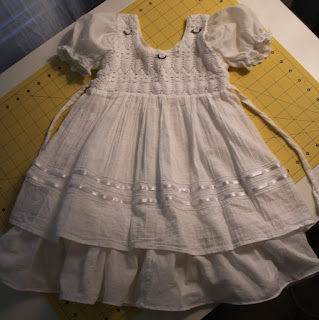I grew up a fresh flower snob, an attitude gleaned from my mother, to whom silk flowers (the affordable ones, anyway) were tacky, dusty things that never came into the house. So the only greenery to grace our house were a couple of tired african violets, a spider plant, and the ubiquitous pothos. Prices have dropped, quality has improved, but old prejudices die hard, and it wasn't until this past week that I bought my first artificial sprig to stick in a vase.
I eased into silk flowers with wreaths - a wreath on the door says that a home is cared for, I think (the man of the house has similar feelings about seasonal flags, so we usually have a banner on the flagpole and a wreath on the door to distinguish our house from the others in our cookie cutter subdivision). And surely decorating a west-facing sun-beaten door is justification for using silk flowers. Inspired by a gorgeous, real hydrangea, I made a foray into the floral aisles of a local craft shop for some white and green blossoms. My 4-year-old spotted some "roses" (ranunculus) and insisted that they needed to be in the wreath, too - and how could I ignore his opinion? A stem of dogwood caught my eye, and I picked that up, too, thinking to work it into the wreath.
Fortunately the ranunculus blended well and filled in a few empty patches, but there was definitely no need for the dogwood. Darn, because I do love dogwood blossoms, and they don't do well here in the south - no hope for live ones. But propped up against my blue walls, they made me happy... dare I just stick them in a vase, artifice notwithstanding?
I dared.
And am now wondering what other long-held opinions it is time to put aside in favour of some new ideas.
I still do love my live flowers, and have a couple of dozen orchids that delight me with their blooms... but that will have to be another post.









































